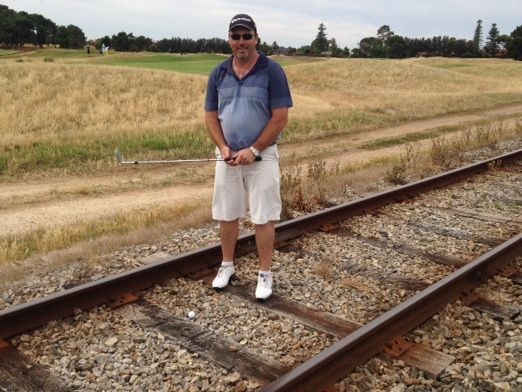yes Thomas, integral part of the course. Runs diagonally though the property, 12 holes on one side, 6 on the other. Clubhouse (in the centre of the property) is a few metres from the tracks. A ball on 18 that is 15 metres through the green is on the tracks, a ball left of the second fairway by 15 metres is on the tracks.
It is a single line, ie trains going to the beach at Grange (two stops away) return on the same tracks. There might be a two-carriage train every 30 minutes or so.
No safety fencing, no electronic signals for the golfers, just a couple of bitumen walkways from1 green to 2 tee and from 13 green to 14 tee.
Mackenzie was consulted in the 1920's to reroute the course as the original routing played across the railway lines, and there were proposals for electrification of the lines. The gantry's would have made play 'interesting' and ugly. His routing eliminated the railway cross-overs.
Advance forward to 1998 and the Australian Open, and the need for length. Several tees are moved back, and two railway crossings are reintroduced.
The 2nd (normally a straight par 5) now has a 'cape' tee shot played across the railway line to a fairway set diagonally to the tee shot line (quite good line of play really, although too long a carry for me).
Similarly on 14, a back, back, back tee has been added which plays over the railway line in front - this change is less successful to me (apart from the 'length') as the railway line is not a feature, and the bunkers on the corner shift from being heroic in nature to just penal on the side. The hole works if you can hit the ball 250 metres plus, otherwise it is a pedestrian forced lay-up hole over otherwise dramatic ground.
here is a guy who was long on 18 - I have only seen this happen once.
